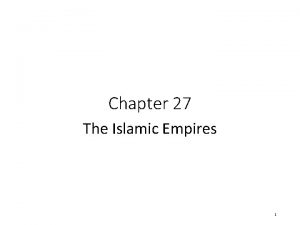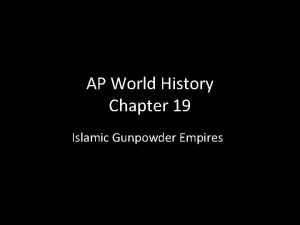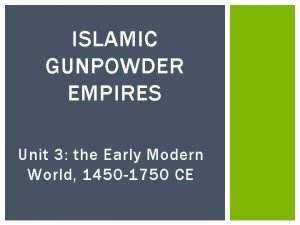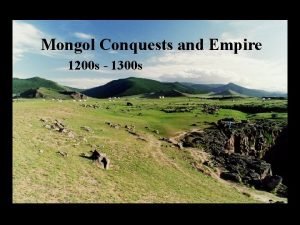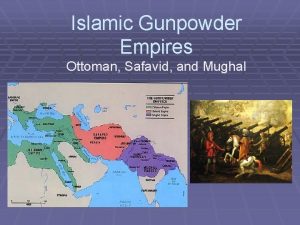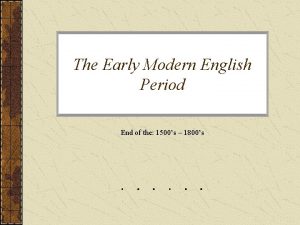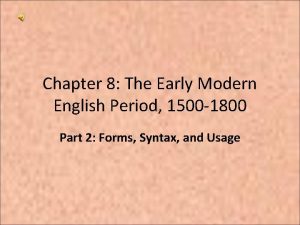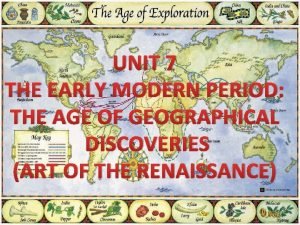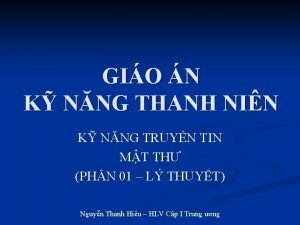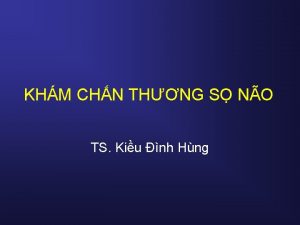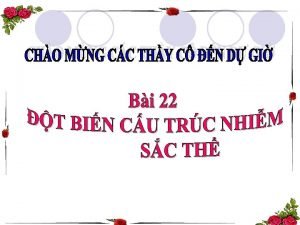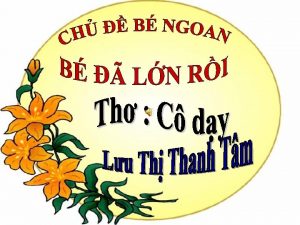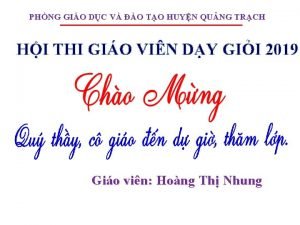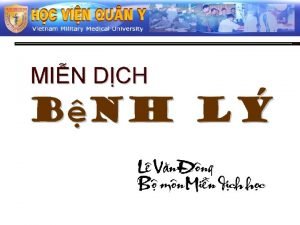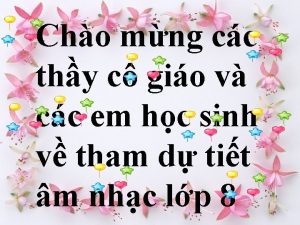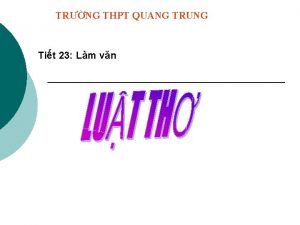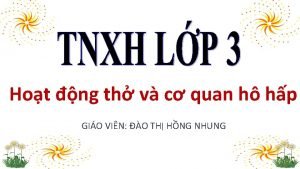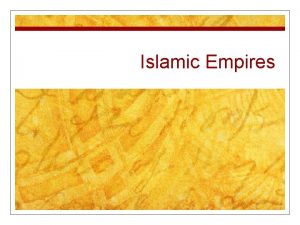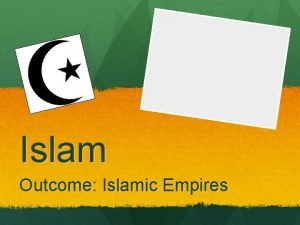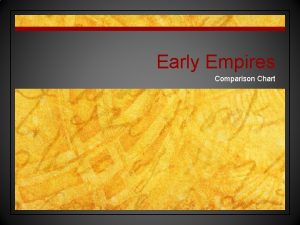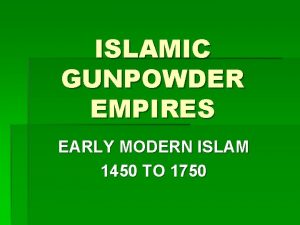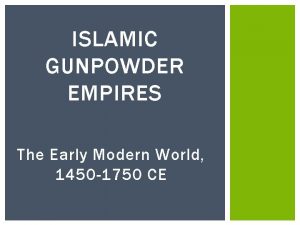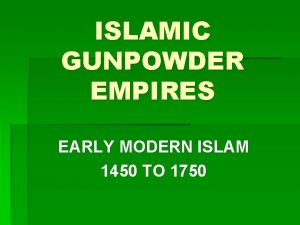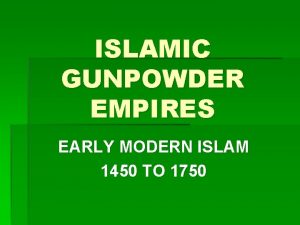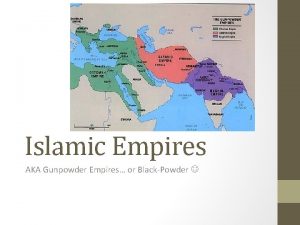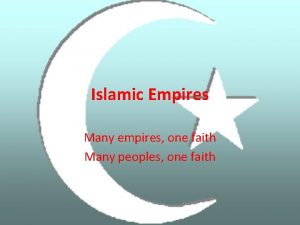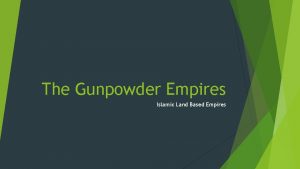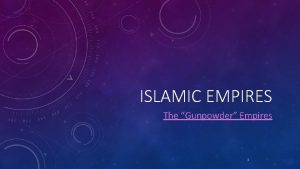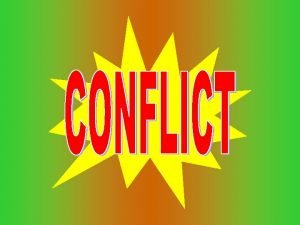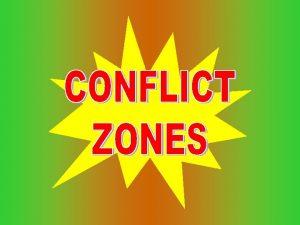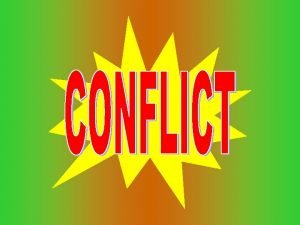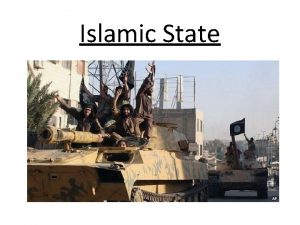Ch 28 Islamic Empires of the Early Modern






























- Slides: 30

Ch. 28: Islamic Empires of the Early Modern Era

From 1300 to 1700, three “gunpowder empires” empires dominated parts of Europe, Africa, & Asia The Safavid Empire The Mughal Empire The Ottoman Empire

These empires were unique, but shared some similarities: All 3 empires were able to conquer neighboring people because they formed strong armies using cannons & artillery All 3 empires were Islamic & ruled by Muslim leaders with well-organized gov’ts made up of loyal bureaucrats All 3 empires blended their culture with neighboring societies to create a high point of Islamic culture

The Ottoman Empire

The Ottomans: Empire Builders • Mongol invasions & fall of Abbasid Caliphate allowed Ottomans to build power base in Anatolia (Turkey) • Osman—early leader, dominated other Turkic groups • 1350 s--Expansion into Europe! • Mehmed II –Conquered Constantinople in 1453, w/ siege warfare, cannons – Then further into Europe—Greece, Albania, Black & Caspian Seas – Invaded Italy & attempted to capture Pope, but failed Mehmed the Conqueror

Hagia Sophia after Ottoman Conquest

Ottoman Empire: A Military State? • Ghazi--Muslim religious warriors; “sword of God” • Military leaders played prominent role in Ottoman gov’t. • “Warrior aristocracy” competed w/ religious leaders for control of bureaucracy • Janissaries--conscripted boys (Christians), military slaves – received special training, learned Turkish language, & converted to Islam – Janissaries pledged loyalty to sultan (became his private army)—led to decline in role of aristocrats • A “Gunpowder Empire”—soldiers were outfitted with primitive gunpowder weapons & cannons

Ottoman Sultans & their Court • “Absolute” monarchs? ? • Sultans dealt with many factions – Ex. : Janissaries vs. religious scholars • Sultans were military leaders & ran an org. bureaucracy • Suleyman the Magnificent – Height of imperialism (conquered Baghdad & Belgrade) – Put pressure on Habsburgs and European vessels in Mediterranean Suleyman the Magnificent • However, sultans grew distant/secluded; focused on large harems more than political and economic issues

Battle of Lepanto • ( (vs. Austrian Hapsburgs, 1571)

Flowering of Ottoman Culture • Constantinople—bad scene immediately after 1453! • Mehmed began restoration; converted Hagia Sophia to mosque (Aya Sofya); built new mosques, palaces, hospitals, gardens, etc. • Adapted Byz ideas—aqueducts, concrete domes, markets, walls • Suleymaniye mosque is considered a hallmark of Ottoman architecture • Topkapi Palace housed gov’t offices, residence for sultan and his harem, pleasure pavilion, etc.

Suleiman Mosque Inside the Topkapi Palace (Harem’s den? )

Flowering of Ottoman Culture • Cosmopolitan markets • Coffeehouses—place for men to gather, smoke, talk politics; key for social & cultural life in Constantinople, poets, scholars • Commerce regulated by Otto gov’t, inspectors, guilds controlled trade/quality/training • Linguistic heritage—Arabic used for law & religion, Turkish preferred for arts & bureaucracy • Artistic legacy—poetry, arabesque mosaics, ceramics, carpet, architecture

Ottoman Decline • Ottoman Empire lasted 600 years; long-lived • REASONS for DECLINE: – Limits of expansion by late 17 th C—no new conquests, started to lose lands lost tax revenue – Corruption among gov’t. officials; local officials kept revenues & squeezed peasants for more rebellions! – Sultans became disconnected (focus on pleasure over governing) – viziers & Janissaries gained more power (were less loyal) – CULTURAL CONSERVATISM—ignorance of European advancements & resistance to printing press – Military technology fell by wayside (Ottomans continued to use large cannons when Europeans adapted light artillery) • The Empire was officially dismantled after World War I

The Safavid Empire

Unlike the Ottomans who were Sunni The Safavid Empire Muslims, the Safavids believed in Shi’a Islam & strictly converted the people they conquered The Safavids were Turks living in Persia who built a powerful gunpowder army & created an empire in Safavid rulers were called shahs, using the Persian title for

the Safavid Empire: Shiite v. Sunni • Rose from Turkic nomads (post -Mongols & Tamerlane) • “Frontier warriors”—Shi’ites • Differences over views on caliph grew into doctrinal, ritual & legal differences conflict! • Safi al-Din—a Sufi mystic; led campaign to purify & reform Islam) among Turks in early 1300 s • Isma’il—was proclaimed shah (emperor) by 1501; conquered most of Persia & waged war w/ Ottomans

the Safavid Empire: Shiite Rule • Shah Isma’il proclaimed Twelver Shiism the offical religion of his realm • Twelver Shi’ites believe there were 12 rightful imams after Muhammad (12 th was driven into hiding) • Believed he will return to lead them & spread the “true” religion • Qizilbash-followers who wore “red hats” w/ 12 pleats to symbolize the 12 imams • Battle of Chaldiran, 1514 • battle w/Ottomans (Sunnis); driven by religious fervor • Safavids declined to use artillery, dismissing it as “unmanly” and unreliable (they also believed the Shah could make them invincible) • Safavid loss in the battle hindered growth of Shiite sect (Shiite rule became confined to Persia)

the Safavid Empire: Shi’ite Rule • Shah Abbas I – Encouraged trade (regionally & even w/ Europeans) – Moved capital to Isfahan (cultural center) – Promoted culture & the arts – Building projects: great mosques, universities, gardens, bath houses – Arts: miniatures, mosaics, carpets • Society & Gender roles – Patriarchy (based on Sharia law) – Women had legal disadvantages – Seclusion & veiling, imposed on all, but especially elites

Safavid silk carpet Persian Miniature

Shah Mosque Isfahan, 1611 -1666


Decline & fall of Safavids – Shah Abbas I paranoid: blinded or killed suitable successors – Practice of secluding princes weak leaders – Foreign threats--nomads, Ottomans, Mughals – March-Oct. 1722: Afghani attacks, Isfahan fell – Nadir Khan Afshar—winner of post-fall struggles for control; self-proclaimed shah in 1736; short-lived – Region became battleground for stronger neighbors

The Mughal Empire

Mughals in India • Babur – Expulsion from steppes = motivation for conquest – Turkic background – Used mobile artillery & cavalry to defeat larger Lodi force; scared the elephants! – outnumbered, defeated Hindu kings – Character: military strategist, fighter, patron of arts & music, writer, musician, designer of gardens – Capital at Delhi Babur’s victory at Panipat, 1526

Mughals in India • Akbar – height of Mughal rule – Had a vision for unity in empire – Social reforms: reconciliation w/Hindu princes, ended jizya, Hindus in bureaucracy, allowed widows to remarry, discouraged child marriages, made sati illegal, relief from purdah (seclusion) – Tolerance & universal religion: “Divine Faith” – Hindu warrior aristocrats controlled peasant villages; local controls left to support centralized gov’t – Economy: collected income via tribute, taxes

• Mughal Architecture – Red Fort, Taj Mahal (built by Shah Jahan as a tomb for his wife) – Blends Persian & Hindu traditions (domes, arches, minarets w/ornamentation) – Symmetry, color, creativity create paradise on earth Taj Mahal Agra, India 1631 -47

Decline of Mughal India – Peace & stability weakened by religious tensions between Muslims, Hindus, Sufis, and Sikhs – Sikhism: new sect in NW India, tried to bridge diff bet Hinduism & Islam, but persecution of Sikhs led to a rise in anti-Muslim feelings – From Shah Jahan’s reign on, rulers began to ignore admin. , milit. , & social needs for reform – Econ production & standard of living declined – Rulers conquered new lands, but spent lots of money & did not grow bureaucracy to govern them – Peasant uprisings, revolts of local Hindu princes – Local officials taking revenues from central gov’t – Invaders – Open to foreign influence—England waiting for economic opportunity & colonization

Siege attack on Rajput forces Akbar riding an elephant

Madonna and Child Turkey commissioned by Jahangir

Shah Jahan’s elephant Indian Bird
 Land based vs maritime empires
Land based vs maritime empires Chapter 27 the islamic empires
Chapter 27 the islamic empires Chapter 27 the islamic empires
Chapter 27 the islamic empires Chapter 19 islamic gunpowder empires
Chapter 19 islamic gunpowder empires How big was the islamic empire
How big was the islamic empire Islamic gunpowder empires webquest
Islamic gunpowder empires webquest Impaler state of decay 2
Impaler state of decay 2 Early empires in the ancient near east
Early empires in the ancient near east Early cpr and early defibrillation can: *
Early cpr and early defibrillation can: * Neoclassical period timeline
Neoclassical period timeline Early modern english period
Early modern english period Neo (modern) biological positivism
Neo (modern) biological positivism Early modern english syntax
Early modern english syntax Early modern english
Early modern english Early modern english
Early modern english Early modern period dates
Early modern period dates A level english language frameworks
A level english language frameworks Mật thư tọa độ 5x5
Mật thư tọa độ 5x5 Các châu lục và đại dương trên thế giới
Các châu lục và đại dương trên thế giới Sự nuôi và dạy con của hươu
Sự nuôi và dạy con của hươu Tư thế worm breton là gì
Tư thế worm breton là gì Các loại đột biến cấu trúc nhiễm sắc thể
Các loại đột biến cấu trúc nhiễm sắc thể Thẻ vin
Thẻ vin Cái miệng bé xinh thế chỉ nói điều hay thôi
Cái miệng bé xinh thế chỉ nói điều hay thôi Thiếu nhi thế giới liên hoan
Thiếu nhi thế giới liên hoan Các châu lục và đại dương trên thế giới
Các châu lục và đại dương trên thế giới điện thế nghỉ
điện thế nghỉ Bổ thể
Bổ thể Thế nào là giọng cùng tên?
Thế nào là giọng cùng tên? Thơ thất ngôn tứ tuyệt đường luật
Thơ thất ngôn tứ tuyệt đường luật Sơ đồ cơ thể người
Sơ đồ cơ thể người


